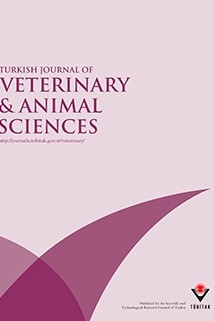
Turkish Journal of Veterinary and Animal Sciences
Yazarlar: Muammer TİLKİ
Konular:-
Anahtar Kelimeler:Goose,Slaughter traits,Carcass traits
Özet: This study was carried out to determine the carcass traits of geese of different origins reared in Turkey. INRA, Armutlu, Başkuyu and Tatlıcak origin geese were used; 6 females and 6 males of each origin were slaughtered at the end of the experiment. Among the origins, the differences were statistically significant for leg weight, head and abdominal fat ratio to the body (P < 0.05), neck weight, feather and gizzard fat ratio to the body (P < 0.01), hot carcass, blood, head, foot, heart, liver, gizzard, cold carcass, wing, breast and back weight, and blood, heart, liver and back ratio to the body were also significant (P < 0.001).
Dergi editörleri editör girişini kullanarak sisteme giriş yapabilirler. Editör girişi için tıklayınız.